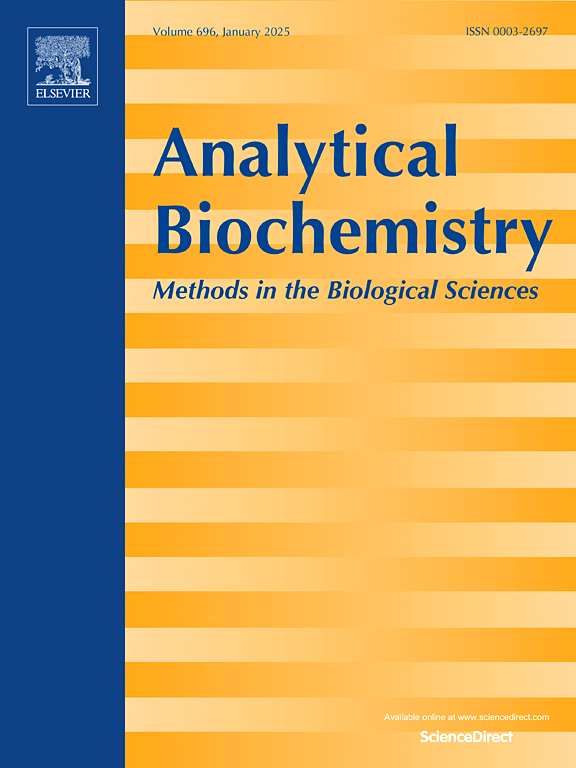液滴状光纤唾液pH传感器:一种牙周病的快速实时检测方法
IF 2.5
4区 生物学
Q2 BIOCHEMICAL RESEARCH METHODS
引用次数: 0
摘要
实时和快速检测唾液pH值用于牙周诊断是一个新兴的护理点(POC)技术趋势。精确、无创、灵敏的POC装置可作为椅子旁的工具,改善临床牙科检查,对良好的牙周诊断至关重要。在本文中,我们报告了一种基于光纤传感器的POC技术,作为一种有前途的标记物,据我们所知,检测唾液pH值在牙周炎诊断和牙医检查中的作用。将单模光纤(SMF)弯曲成一段细毛细管,制成了基于液滴结构的光纤传感器。在这项工作中,首先,实验研究了所提出的传感器对不同pH值范围从1到7的性能。实验表明,该传感器对不同pH值的校准曲线灵敏度为−2.075 nm/pH,线性度为0.985。然后将66例患者纳入本研究,根据临床结果分为两组:临床牙周健康组和慢性牙周炎组。收集每位患者的真实唾液,并使用上述提出的传感器立即评估唾液pH值。实验结果表明,A组和B组唾液pH作图范围分别为6.5 ~ 7.3和5.5 ~ 6.4。所提出的传感器提供了实质性的实际优势,提供了快速响应时间小于2秒,即时,无创,易于监测的工具,用于牙周健康状况的早期检测和诊断。本文章由计算机程序翻译,如有差异,请以英文原文为准。

A drop-like optical fiber salivary pH sensor: A rapid and real-time detection of periodontal disease
A real-time and rapid detection of salivary pH for periodontal diagnosis is an emerging point-of-care (POC) technology trend. The precise and non-invasive sensitive POC devices, which could be used as chair-side tools to improve clinical dental inspections, are essential for an excellent periodontal diagnosis. In this paper, we report on developing a POC technology based on optical fiber sensors as a promising marker, to the best of our knowledge, to detect the role of salivary pH in periodontitis diagnosis and support dentists’ inspection. The optical fiber sensor based on a drop-like structure was fabricated by bending single-mode fiber (SMF) into a section of a thin capillary tube. In this work, firstly, the performance of the proposed sensor towards different pH levels ranging from 1 to 7 was experimentally investigated. Experimentations showed that the pH sensor responded to various pH levels with a calibration curve sensitivity of −2.075 nm/pH and a high linearity of 0.985. Then, 66 patients were enrolled in this study and divided into two groups according to clinical outcomes: Group A with clinically healthy periodontium and Group B with chronic periodontitis. The real saliva from each patient was collected, and the salivary pH was evaluated immediately using the aforementioned proposed sensor. The experimental results show that Group A and Group B salivary pH mapping ranged from 6.5 to 7.3 and 5.5 to 6.4, respectively. The proposed sensor offers substantial practical benefits, providing a rapid response time of less than 2 s, instantaneous, noninvasive, and easily monitored tool for the early detection and diagnosis of periodontal health status.
求助全文
通过发布文献求助,成功后即可免费获取论文全文。
去求助
来源期刊

Analytical biochemistry
生物-分析化学
CiteScore
5.70
自引率
0.00%
发文量
283
审稿时长
44 days
期刊介绍:
The journal''s title Analytical Biochemistry: Methods in the Biological Sciences declares its broad scope: methods for the basic biological sciences that include biochemistry, molecular genetics, cell biology, proteomics, immunology, bioinformatics and wherever the frontiers of research take the field.
The emphasis is on methods from the strictly analytical to the more preparative that would include novel approaches to protein purification as well as improvements in cell and organ culture. The actual techniques are equally inclusive ranging from aptamers to zymology.
The journal has been particularly active in:
-Analytical techniques for biological molecules-
Aptamer selection and utilization-
Biosensors-
Chromatography-
Cloning, sequencing and mutagenesis-
Electrochemical methods-
Electrophoresis-
Enzyme characterization methods-
Immunological approaches-
Mass spectrometry of proteins and nucleic acids-
Metabolomics-
Nano level techniques-
Optical spectroscopy in all its forms.
The journal is reluctant to include most drug and strictly clinical studies as there are more suitable publication platforms for these types of papers.
 求助内容:
求助内容: 应助结果提醒方式:
应助结果提醒方式:


